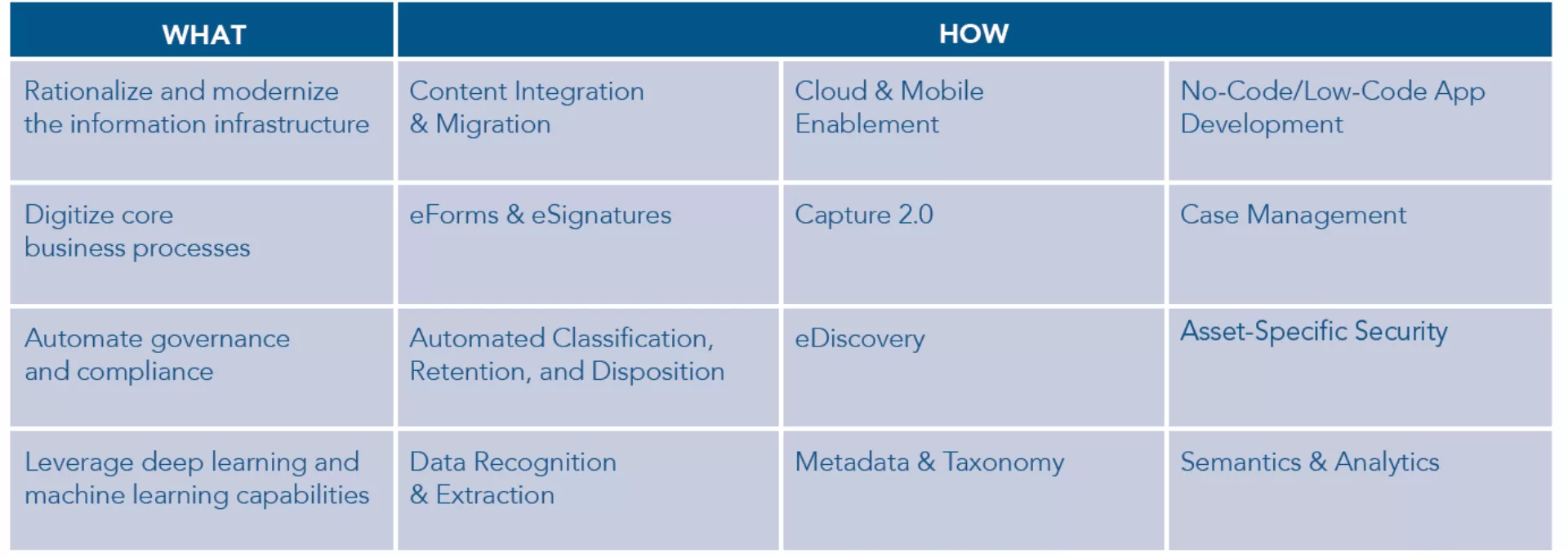Digital Transformation and The Future of Work
Think of digital transformation as the end result of actions taken to move your organization away from the traditional or manual way business is transacted, to new ways of working in the digital era. Since the bulk of information is created or born digitally, it stands to reason that the processes associated with that information should be carried out digitally, keeping the information in its digital form throughout. For example, review and approval processes, and contract negotiations and signings, can be managed completely digitally using cloud applications and mobile devices.
Yet for many businesses, if a signature is required, the document is printed, signed, and scanned back into the system to proceed along the workflow until the end. The disruption this causes, slowing down the business process, can prove costly and result in a loss of business if the transaction cannot be completed in a timely manner. Not to mention the potential risk the document could be lost or misplaced and accessed by unauthorized personnel when in its physical form.
One thing is for sure, digital transformation is a significant issue for many businesses. A recent report by AIIM finds that 81% of enterprises believe digital transformation is “important” or “very important” to their organization.1 Yet even with this number so high, the same study finds that “less than 1 in 5 organizations report being near their goals of digital transformation by 2020.” This should be of great concern for companies seeking a competitive advantage in the marketplace and given the heavy fines for noncompliance with regulatory mandates like the European Union (EU) General Data Protection Regulation (GDPR), Sarbanes-Oxley (SOX), and many others related to specific business segments. So, what is needed to help with your digital transformation journey?
Managing Information More Intelligently
In early 2018, AIIM introduced the notion that business effectiveness and profitability are tied to and impacted by the organization’s level of information management and digital transformation maturity. The premise is that organizations with strong information management practices and digital business processes—especially those using automation to manage core business processes—increase their operational effectiveness, reduce costs, and increase profitability.
This is where Intelligent Information Management (IIM) plays a role. IIM is not a technology but a set of practices combined with technologies that form building blocks for establishing and growing a solid information ecosystem that supports the digital transformation journey.
There are four key elements of practices of IIM to follow:
- Rationalizing and modernizing the information infrastructure
- Digitalizing core organizational processes
- Automating compliance and governance
- Leveraging analytics and machine learning
Key Elements Related to IIM

Rationalizing and Modernizing The Information Infrastructure
When we look at modernizing the information infrastructure, the first thing that comes to most people's minds is technology. However, while technology is a tool, it is not the only one related to managing information. Additional information management tools include, for example, a governance framework with policies and procedures to guide the organization, people who interact with the information and organization, and metadata. So, when we talk about modernizing the information infrastructure, there is a need to take a more holistic view and assess not only the technology you have and may need, but these other elements as well.
Modernization of the information infrastructure does not mean getting rid of what you have and starting over. The best approach is to investigate, document, and put in place a project plan that fills the gaps, supports operations and compliance, and leverages your current investment. Look for ways to integrate or link your information repositories and applications. Assess how cloud and mobile solutions could extend your capabilities, enabling workers and clients to access information and interact with your processes. Enhance flexibility by giving the power to make changes to those who make the decisions and do the work using no-code/low-code applications. This removes total dependence and reliance on IT services to implement required changes. In most cases, a good place to begin is by looking at your business processes, which we will cover in the next article in this series, Digitalizing Core Business Processes. In the end, it is up to you to take the initiative and begin your digital transformation journey.
